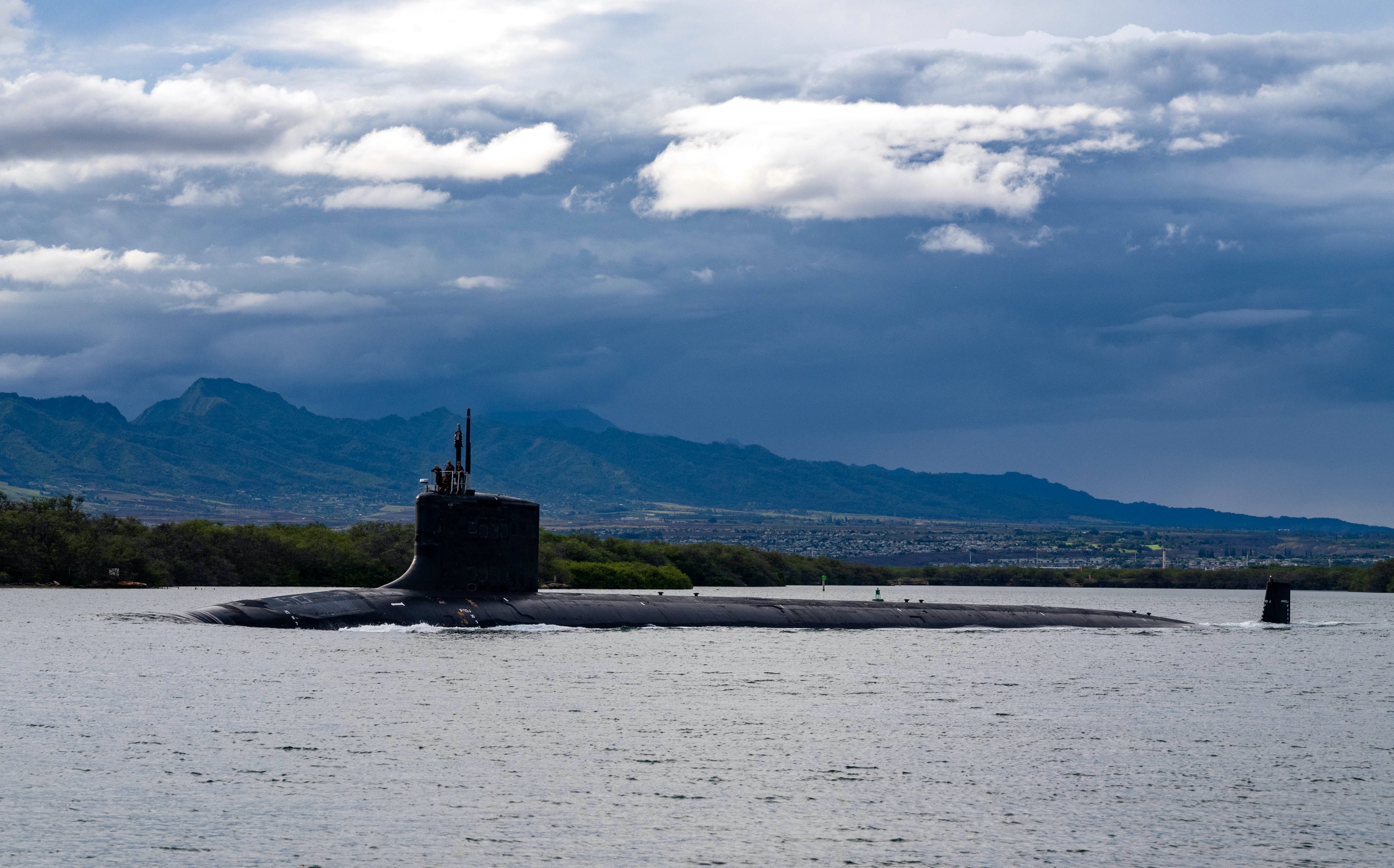
Advanced undersea platforms and systems are “one of our clear advantages” in countering China and Russia, which is critical to deterring Chinese aggression across the Indo-Pacific, Defense Secretary Lloyd Austin told the House Armed Services Committee Wednesday.
The United States is committed to keeping that lead against the pacing challenge of Beijing, Austin said. He noted the significance of the agreement between Australia, the United Kingdom and the United States [AUKUS] on the nuclear-powered but conventionally-armed submarine also including the exchange of advanced technologies.
Even as Canberra is upgrading its Adelaide shipyard to maintain and build nuclear-powered submarines, it has also invested $3 billion in the American industrial base, Austin said.
Under the terms of agreement announced at a summit meeting in San Diego this month, the United States is prepared to sell Australia up to five nuclear-powered Virginia-class submarines until Canberra is capable of building its own. Australian sailors have already begun training with the American Navy in operating nuclear-powered submarines.
Austin denied Chinese claims that the agreement ends Australia’s sovereignty over its own navy.
“They are a great partner,” he said.
Several times during the hearing on the administration’s $842 billion request for Fiscal Year 2024, members wanted more information on unmanned system, especially undersea technology.
In the immediate future, “you’re going to see a shift to robotics in a big way, Army Gen. Mark Milley, chairman of the Joint Chiefs of Staff, said. The use of low and slow commercial aerial drones in Ukraine demonstrated unmanned system’s versatility in combat. He expects the United States and China to aggressively explore their use in maritime warfare.
Milley estimated that one-third of the Navy could be unmanned in the not-distant future.
“We must continue to invest in the industrial base to support remotely operated ship development, fleet modernization, on-time delivery of the Columbia class submarine, and to accelerate production and maintenance of Virginia-class submarines to support both the United States and AUKUS needs,” Milley said in prepared remarks given during his opening statement.
The administration “wanted to get upstream on this” as early as possible on advanced technologies like artificial intelligence and quantum computing as well as unmanned systems, Austin said.
“The department is also accelerating investments in cutting-edge defense capabilities, such as uncrewed systems that can operate on the water, underwater, in the air, and on land. Integrating human-machine teaming, autonomous systems, and resilient networks will make our operations significantly faster, more lethal, and more survivable,” Austin said in prepared remarks.
The budget request includes $11 billion for long-range strike weapons, including hypersonics, Austin said. He noted Russia has used these weapons in Ukraine with only varying degrees of success. The United States is not proceeding with putting nuclear weapons on hypersonic platforms, he said.
The second strike capability in the U.S. triad provides sufficient deterrent, he said.
Milley still favors developing sea-launched nuclear-armed cruise missiles, he said during testimony. The Navy officially abandoned the program last year, saying it had “zero value.”
Multi-year contracts “sends a strong signal” to industrial bases that the administration is committed to modernizing defense platforms, systems and software, Austin said. He added $170 billion in the request is for procurement.
Earlier this year, Chief of Naval Operations Adm. Michael Gilday told a Heritage Foundation audience that the Navy needed to indicate how many ships it needed per year.
“We need to give a signal to industry that we need to get to three destroyers a year, instead of 1.5, that we need to maintain two submarines a year,” he said during the event. “And so part of this is on us to give them a clear set of – a clear aim point so they can plan a work force and infrastructure that’s going to be able to meet the demand. But again, no industry is going to make those kinds of investments unless we give them a higher degree of confidence.”
The department is taking a “hard look” at the infrastructure at public and private shipyards to make sure they and the 650 other installations under direct Pentagon control are up to par in terms of buildings, power, utilities and housing, Austin said.
The examination “would not be done within a year,” he said.





